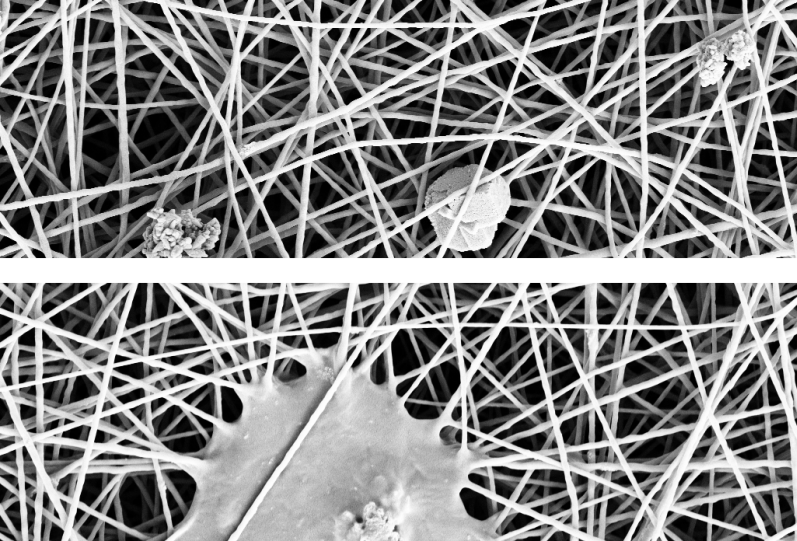|
Anomaly Detection by Sparse Representations
The Problem
Figure 1: An example of Nanfiber Images containing anomalies. The filaments are very small (100 nm diameter) and follow a random pattern. Spurious elements like films or cluts have to be detected and measured. Anomaly Detection by Sparse Representations We design an algorithm that learns, during a training phase, a model yielding sparse representations of the structures that characterize correctly produced nanofiborus materials. Defects are then detected by analyzing each patch of an input image and extracting features that quantitatively assess whether the patch conforms or not to the learned model.
Core of the proposed solution is a dictionary learned that provide accurate reconstruction and sparse representations from normal data. During the anomaly detection phase, we solve the sparse coding problem of each test patch, and the resulting sparsity and the reconstruction error are used as data-driven features to measure the conformance of test patches with respect to the learned dictionary. Anomalies are then detected as patches corresponding to outliers with respect to the features distribution.
Figure 2: an illustration of detected anomalies in a nanofiber image. Resources |
|
References [Carrera et al., 2017] Defect Detection in SEM Images of Nanofibrous Materials [Carrera et al, 2016] Scale-invariant Anomaly Detection With Multiscale Group-sparse Models [Carrera et al, 2018] Online Anomaly Detection for Long-Term ECG Monitoring using Wearable Devices
|

